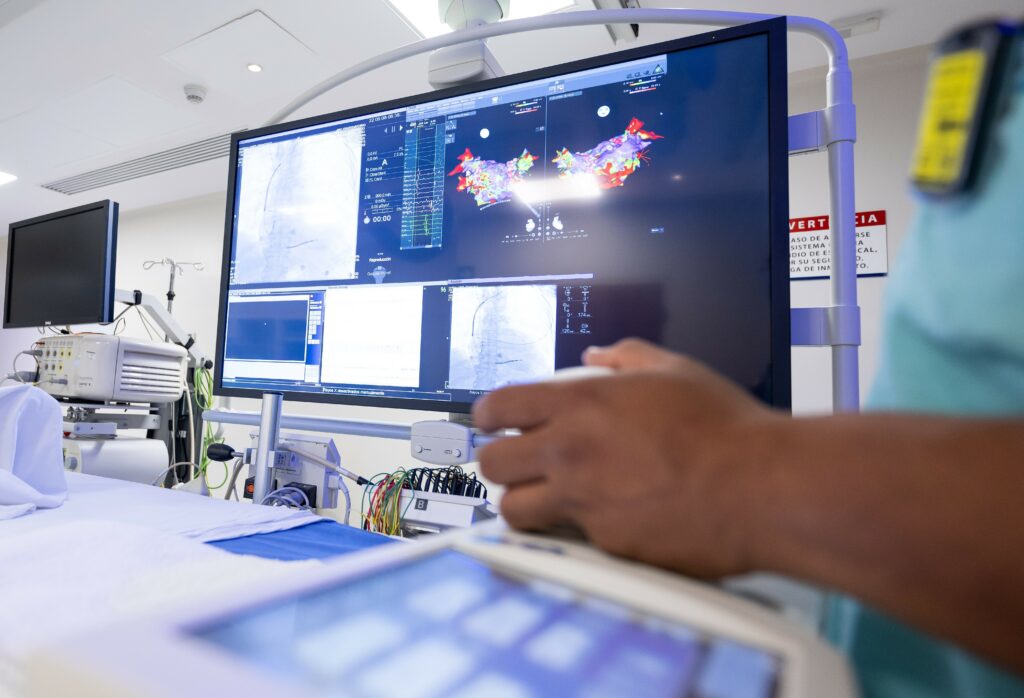Key points
- It is considered a minimally invasive procedure for the treatment of arrhythmias.
- The doctor will access a 3D reconstructed heart.
- During electroanatomical mapping, the doctor obtains information in real-time to integrate their movements perfectly.
Any disorder of the normal rhythm of the heart is considered an arrhythmia, says Dr. Santiago Nava Townsend, electrophysiologist cardiologist at ABC Medical Center. There are two types:
- Tachyarrhythmia. Refers to rapid arrhythmias.
- Bradyarrhythmias. It refers to arrhythmias that are slower than usual.
“There are different causes for which an arrhythmia occurs; they can be due to a congenital defect (from birth), derived from some diseases such as high blood pressure or iron accumulation in the body (hemochromatosis). Other factors can contribute to the presence of arrhythmias such as stress, caffeine consumption, tobacco, alcohol, and certain medications.”1
Electroanatomical mapping is a sophisticated method for the care of tachyarrhythmias that makes it possible to find areas of abnormal rhythm in the heart. Considered a minimally invasive procedure, in electroanatomical mapping, two or three punctures are made either in the femoral vein or in the femoral artery, from which several electrodes will be directed into the heart.
This system makes it possible to study the electrical activity in the four cardiac cavities, at the same time the heart is reconstructed in 3D and, once the catheters are in place, it is possible to navigate inside the organ in four dimensions, that is up, down, forward, backward, and rotate it.
One of this technique’s benefits is that it allows you to open the heart and see the cavity inside, allowing you to find in detail the anatomical structures to treat and achieve multiple projections of the heart’s shape.
Thanks to this, the doctor can locate, with very high precision, the specific anatomical area where arrhythmias could originate and thus be able to cure them very effectively.
For Dr. Nava, electroanatomical mapping is a treatment with great advantages because everything happens in real-time, and during the procedure, you can see how the catheter moves inside the heart, which allows your eye and hand to be perfectly coordinated during the procedure.
This technology helps address cases of arrhythmias considered very complex since they originate in areas of the heart where it was previously impossible to reach.
Once the tubes are removed, after completing the procedure, a single compression is performed on the leg, which can last up to 15 minutes so that the vein or artery is sealed. This way, the patient will be able to walk out of the hospital the next day without any physical restrictions.
To achieve this, a team of highly trained specialists is needed, who has the support of nurses and technicians whose purpose is to cure patients and restore their quality of life.
At ABC Medical Center’s Cardiovascular Center, we can provide you with specialized care. Contact us!
Fuente:
Dr. Santiago Nava Townsend – electrophysiologist cardiologist at ABC Medical Center
https://youtu.be/jB-z28bXs0U
1 https://www.gob.mx/salud/articulos/que-son-las-arritmias



